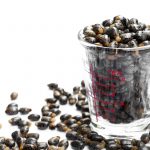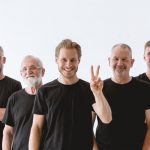Central Serous Retinopathy: 1-Year Homeopathic Case Study
JARED C. PISTOIA, ND
Central serous chorioretinopathy (CSC) is a self-limiting disease that typically presents with unilateral blurred vision and metamorphopsia (image distortion).1,2 Other symptoms can include dyschromatopsia (colors are distorted), micropsia (objects appear smaller), and dimness of vision.1-3 While the etiopathogenesis is poorly understood, symptoms are the result of fluid accumulation under the macular portion of the retina.1,2 CSC is most common in men between the ages of 20 and 40, and risk factors are thought to be strongly associated with sympathetic overactivation secondary to sleep disturbances, psycho-emotional stress, and history of corticosteroid use.1-3 Prognosis for visual recovery without treatment is strongly favorable, as symptoms typically improve or resolve within 1-6 months.1-3 However, 20-30% of patients may experience recurring symptoms within 12 months of symptom resolution.3 Conventional therapies for CSC include argon laser and photodynamic therapy, both of which aim to resolve fluid accumulation.3
The role of homeopathic medicines in the treatment and prevention of CSC has yet to be explored. However, research suggests that homeopathic medicines may, in general, attenuate overactive stress responses, particularly in neuroendocrine pathways responsible for inflammatory reactions and desensitization of negative feedback mechanisms (eg, HPA-axis dysfunction).4 The following case study illustrates the role of homeopathic medicine in the overall management of CSC and stress-related ailments.
Case Study
Patient Presentation
A 32-year-old male was diagnosed with CSC 1 month prior to presenting for a telemedicine visit in September 2020. His visual symptoms were confined to the left eye and included blurred vision, dim vision, micropsia, dyschromatopsia, and metamorphopsia. Concomitant symptoms included left-sided facial paresthesia described as constant tingling of the mouth, lips, and gums; mild aching and pressure in the left “inner ear”; globus sensation; insomnia; unrefreshing sleep; and back pain. He was rather distressed at the first appointment, expressing a great deal of frustration and fear about his health.
Generally, the patient’s demeanor was kind, reserved, and polite. He had thin, brown hair and a phlegmatic temperament. It was difficult for him to express his emotions, aside from feelings of anxiety and fear. In fact, he spontaneously expressed several fears at different points throughout the interview, namely his fear of cancer, fear of ill health, and fear of weight gain: “I guess I worry that my health will get worse and decline into something like cancer.” When I asked him why he had so much fear around his health, he responded, “I feel like I’m losing control.” When I asked him why he decided to call me for help, he stated firmly, “I want to be healthy, and I know I can still feel better.” He also admitted that he felt embarrassed about it.
In the professional sphere, he worked for a digital marketing firm – a job that was a major and ongoing source of stress. The company he worked for was pressuring him to go above and beyond in his work ethic, and they were also merging with another company. These 2 workplace demands were increasing his stress load and disturbing his work space. “At jobs these days, everyone expects that you want to move up and that you’re going to do all of this extra work. I don’t want to move up; I just want to do the job and go home. I’m tired of putting on the fake smile and pretending I care more than I do.” He was not particularly passionate about the type of work he was involved with, and felt that he had not yet figured out his life purpose. The general uncertainty around his career, life purpose, and the stressful atmosphere of his workplace appeared to be weighing heavily on him.
He reported that his physical body felt generally weak and achy, but especially his back. This was contrasted with his love of bodybuilding. His revolving goal had been the same for many years, namely to “get bigger and stronger” by lifting heavy weights. He felt that his recovery periods after exercise were slow and that he was prone to injuries: “My back feels stiff and it feels like I strained it. It just takes a while for it to recover after workouts.” When I asked him why he liked lifting heavy weights, he said he wanted to feel strong and confident in his appearance, which demonstrates a lack of confidence and self-esteem. Bodybuilding was his compensatory response to low self-confidence. For at least 4 years, he had diligently persisted in lifting heavy weights and trying to get bigger, yet without making any significant changes in the size of his body.
After a review of systems, he reported easy and profuse perspiration despite having an overall cool body temperature. His hands were also cold and clammy. His diet included salty and fatty foods, and he had a strong preference for eggs, which he ate for breakfast on most days. He practiced intermittent fasting because he was afraid of weight gain. He was not a very thirsty patient, as he drank only a few cups of water every day.
I inquired into the nature of his dreams, and he recalled one major recurring dream of losing control of a car. He stated that the emotional content of his dreams was “mainly fearful,” although he couldn’t recall very many.
Discussion & Treatment
The chief prescribing indication in this case was the patient’s fearfulness. Fear strongly invokes the stress response. While his primary motivation for initiating a visit was to address the CSC, underneath was a deep fear that he was losing control of his health. The depth of his fear was further revealed by the emotional content of his dreams. Often illuminating repressed emotions and magnifying suppressed emotions, dreams can be helpful in understanding a patient’s core psycho-emotional experience.5 The litany of neuromuscular complaints, left-sided symptoms, desire for eggs, slow recovery periods, and profuse perspiration were also important confirmatory symptoms.6 Ultimately, his fearful nature, desire to get bigger to compensate for low self-confidence, and his presenting concerns all led me to prescribe Calcarea carbonica (Calc carb) 200C.
Calc carb is prepared from calcium carbonate extracted from oyster shells. It is a characteristically slow and fearful remedy state, often principally involving the musculoskeletal system, where the majority of calcium is found in the body.6 However, calcium is also critically important for nerve signal transduction, which helps to explain why homeopathic Calc carb often involves neuromuscular complaints.6
The fearfulness of Calc carb is compensated for by seeking out protection and stability, especially as it pertains to health and finances,6,7 which are both critical sources of stability in adult life. Most often, though, fearfulness results in passivity, immobility, and lack of courage.7 The patient’s slowness, desire to get bigger, and the high level of stress caused by career dissatisfaction are examples of compensatory responses to the underlying disturbance (fearfulness). Similarly, without their hard, definitive, protective shells, oysters are defenseless. They are also slow organisms; in fact, they’re totally immobile after finding a place to attach to in adulthood. An oyster’s entire life depends upon the structure and function of its protective shell and selected location. Thus, like the oyster from which Calc carb is prepared, patients in need of this medicine live with fear that their source of stability may come into question and that, if that happens, life would surely become scary and overwhelming. The vital reaction, therefore, is to assure that this does not happen. Thus, they are reliable and steady workers who don’t challenge the status quo, prefer the comfort of certainty, and seek to gradually build themselves up.
Follow-up Appointments
One month after the first appointment, the patient stated the following: “I think my eye is starting to get better; the vision seems less distorted. I haven’t really been feeling anxiety. The fear of cancer hasn’t been weighing on my mind. I think I was reserved and sort of robotic with my emotions, but I’m having highs and lows now, and I feel happy overall. I have the energy to do more, and my mood is much better. I’m sleeping better and waking up before my alarm. I’ve been able to make a lot of new changes and have embraced new hobbies, like writing, reading, model assembly, and photography. I haven’t noticed any pain in my ear, and the globus is gone. My face still tingles, but not as much. I stopped lifting heavy weights because I realize I have been doing too much.”
Two months after the first appointment, he stated, “This is amazing! My eye is significantly better. The color distortion seems to be gone, and my vision doesn’t seem as far away as it was. The blurriness is less significant. There is slight distortion that remains, but not all the time. I started a fast, and I don’t think I would have had the willpower to do even this 24-hour fast a few weeks ago. My back hasn’t been aching much, and my recovery has been good.”
Three months after his first appointment, he reported a less-intense relapse of his visual symptoms, facial paresthesia, and anxiety. He stated that he was “still feeling good overall,” sleeping well, and that his energy was stable. I prescribed another dose of Calc carb 200C.
Six months after the first appointment, he reported that his eye was still slightly blurry, but not every day. He observed that both the facial paresthesia and visual symptoms worsened under stress. He stated that he was generally feeling “happy and content,” he denied back pain, and interestingly, noted that he had been dreaming much more often. He stated that he was ready to find another career after realizing how unhappy his job was making him.
Twelve months after the first appointment, he reported that he quit his job 1 month prior and figured out what he wanted to do with his life. “I’ve never been happier work-wise – I’m building up a new portfolio and learning new skills. I realized how exhausted and stressed my job was making me feel. I am still sleeping through the night and waking up before my alarm, feeling refreshed. But I still have some lingering symptoms: mild left wrist pain, mild inner earache, occasional globus, and facial paresthesia once in a while.” He reported experiencing blurriness of vision about 5 months prior, which he attributed to an extremely stressful period at his job. He also saw a specialist at that time for worsened ear pain, and the doctor stated that it was stress-related.
I asked him what his biggest challenge was at the moment, and he said, “Building enough confidence to do what I’m doing now; I’m not as confident as I need to be, and it’s scary. I’m stressed and worried that my new career choice won’t work out.” I believe his lack of confidence was the primary reason for initiating this visit, because he didn’t speak much about his physical symptoms. He spent most of the time talking about his career change. I prescribed Calc carb 1M because I felt he required a deeper-acting and longer-lasting potency to carry him through the next few months of his life as he transitioned careers.
Synopsis
The patient’s stress levels were clearly contributing to his visual symptoms and overall symptom picture. It seems that Calc carb attenuated his fear response, relieved psycho-emotional stress, and probably regulated his HPA axis. In turn, his sleep improved and neuromuscular stress was relieved, which helped eliminate 2 of the major contributors to CSC. It is always refreshing when a patient reports new revelations and insights about the nature of meaningful life topics, ie, career, and indicates a favorable response to the prescribed homeopathic. It will be interesting to see how he responds to the 1M potency over the next few months.
Generally, this case study demonstrates the potential for dramatic improvements and improved stress management following the use of well-indicated homeopathic medicines.
References:
- Bakri SJ, Berrocal A, Capone A, et al. Central Serous Chorioretinopathy. 2016. The American Society of Retina Specialists. Available at: https://www.asrs.org/patients/retinal-diseases/21/central-serous-chorioretinopathy. Accessed September 16, 2021.
- Porter D. Central Serous Chorioretinopathy Diagnosis and Treatment. September 4, 2019. American Academy of Ophthalmology. Available at: https://www.aao.org/eye-health/diseases/central-serous-retinopathy-treatment. Accessed September 16, 2021.
- Semeraro F, Morescalchi F, Russo A, et al. Central Serous Chorioretinopathy: Pathogenesis and Management. Clin Ophthalmol. 2019;13:2341-2352.
- Bellavite P, Ortolani R, Pontarollo F, et al. Immunology and homeopathy. 5. The rationale of the ‘Simile’. Evid Based Complement Alternat Med. 2007;4(2):149-163.
- Whitmont EC, Perera SB. Dreams: A Portal to the Source: A Clinical Guide for Therapists. New York, NY: Routledge; 1989:5-7.
- Vermeulen F. Synoptic Reference I. 2nd ed. Glasgow, Scotland: Saltire Books; 2015:396-400.
- Whitmont EC. Calcarea and Magnesia: A Comparison. In: Psyche and Substance: Essays on Homeopathy in the Light of Jungian Psychology. Berkeley, CA: North Atlantic Books; 1991:142-143.

Jared C. Pistoia, ND is a naturopathic physician, professional homeopath, and author of the book In Pursuit of Health. Dr. Pistoia received his Doctor of Naturopathic Medicine degree from NUNM in 2020 and is currently practicing in the state of Connecticut. Visit his website at: www.drpistoia.com.










